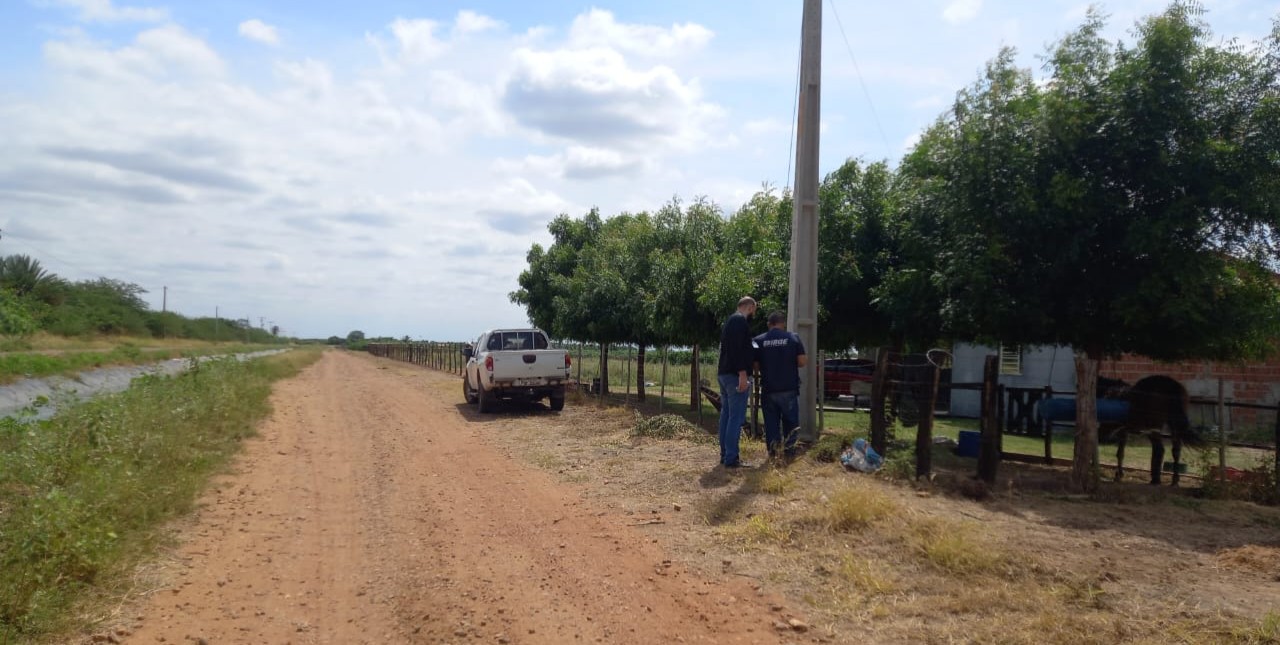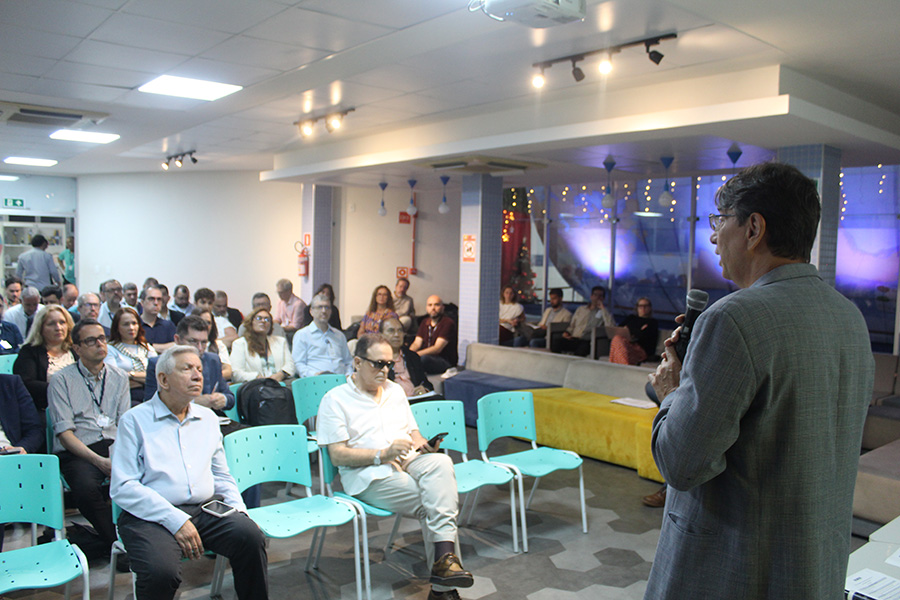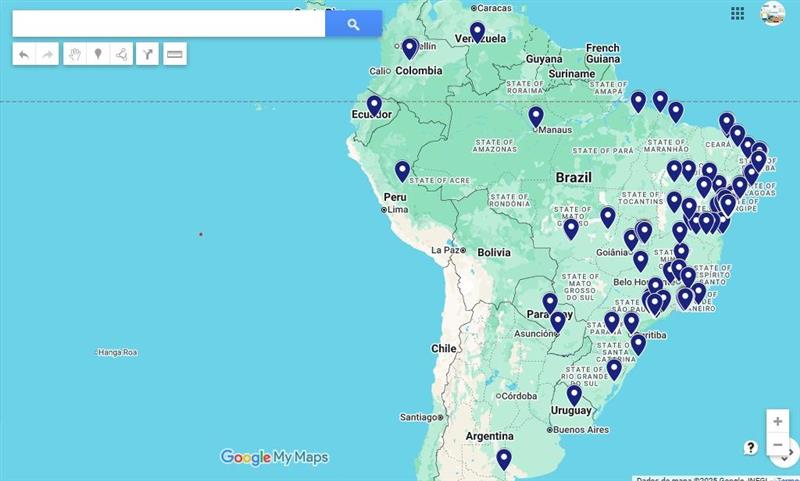Monthy Continuous PNAD
Unemployment rises to 6.8%, yet earnings and formal contracts hit record
March 28, 2025 09h00 AM | Last Updated: March 28, 2025 04h17 PM

Despite the rise in unemployment, the number of persons employed with a formal contract in Brazil hit a new record, reaching 39.6 million - Picture: Dênio Simões/Agência Brasília
The unemployment rate for the moving quarter ended in February 2025 rose to 6.8%, a rise of 0.7 percentage points over the previous moving quarter (ended in November 2024), when it was at 6.1%. Despite the rise, earnings of workers hit a record in the time series (R$3,378), as well as the number of workers with a formal contract (39.6 million).
The rate repeated the lowest value among the quarters ended in February (6.8%), which had occurred in 2014. The data are from the Continuous National Household Sample Survey (Continuous PNAD), released today (28) by the IBGE.
The unemployment rate stood 1.0 percentage points below that registered in the same moving quarter last year. The unemployed population grew 10.4% over the previous quarter, hitting 7.5 million persons. However, that contingent is 12.5% smaller than that recorded in the same quarter of 2024. According to Adriana Beringuy, IBGE´s Coordinator of Household Surveys, "that rise follows the seasonal pattern of the Continuous PNAD, with a trend to expand the search for jobs in the first quarter of each year."
The employed population in Brazil retreated 1.2% against the previous quarter and hit 102.7 million workers. That contingent is still 2.4% higher than that reported in the same period last year.
Construction and Public administration leverage the retreat in employment in quarter
No activity group grew over the previous quarter, and three of them reduced the number of employed persons: Construction (-4.0% or less 310 thousand persons), Public administration, defense, social security, education, human health and social services (-2.5% or less 468 thousand persons) and Domestic services (-4.8% or less 290 thousand persons).
Compared with the same moving quarter a year ago, four groups increased in terms of employed population: General industry (3.2% or more 409 thousand persons), Trade, repair of motor vehicles and motorcycles (3.6% or more 690 thousand persons), Information, communication and financial, real estate, professional and administrative activities (3.5% or more 447 thousand persons) and Public administration, defense, social security, education, human health and social services (4.1% or more 717 thousand persons). Only the group of Domestic services reduced (-3.6% or less 216 thousand persons).
Number of workers with formal contract hits record
The number of persons employed with a formal contract in the private sector hit 39.6 million, a new recorded in the time series started in 2012. It rose in the two comparisons of the survey: 1.1% (or more 421 thousand persons with a formal contract) in the quarter and 4.1% (or more 1.6 million workers) in the year.
According to Adriana Beringuy, " the expansion in jobs with a formal contract is related with the maintenance of admissions in trade."
On the other hand, the number of persons employed without a formal contract in the private sector (13.5 million) dropped 6.0% in the quarter and remained stable in the year. The number of those employed in the public sector (12.4 million) retreated 3.9% in the quarter and rose 2.8% in the year. In the meantime, the contingent of self-employed workers (25.9 million) remained stable in the quarter and grew 1.7% in the year.
As a result of those movements, the informality rate slightly reduced: 38.1% of the employed population (or 39.1 million informal workers) against 38.7% in the quarter ended in November 2024 and, again, 38.7% in the quarter ended in February 2024.
Real average earnings of workers hit a record in time series: R$3,378
The usual real average earnings of workers hit R$3,378 in the moving quarter ended in February 2025, with a rise of 1.3% in the quarter and of 3.6% in the year, discounted the effects of inflation in these periods. It was the highest value in the time series of the Continuous PNAD, started in 2012. The increase in the quarterly comparison was leveraged by the rises in earnings in the groups of Industry (2.8% or more R$89), Public administration, defense, social security, education, human health and social services (3.1% or more R$139) and Domestic services (2.3% or more R$29).
Adriana Beringuy notes that "the rise in earnings in the quarter is related to the reduction in the contingent of informal workers in certain segments of the economic activities, thus growing the proportion of formal jobs with higher earnings."
In the annual comparison, two categories increased: Construction (5.4% or more R$135) and Domestic services (3.1% or more R$39). The other groups did not change significantly.
Despite the reduction in the number of employed persons in Brazil, the usual real wage bill (R$342.0 billion) was a new record in the time series, remaining stable in the quarter and growing 6.2% (more R$20.0 billion) in the year.
More about the survey
The Continuous PNAD is the main instrument to monitor workforce in Brazil. The survey sample per quarter corresponds to 211 thousand households surveyed in Brazil. Nearly two thousand interviewers work in the survey in 26 states and in the Federal District, integrated to the data collection network of more than 500 IBGE branches.
Due to the Covid-19 pandemic, the IBGE implemented data collection by telephone on March 17, 2020. In July 2021, face-to-face data collection was resumed. The identity of the interviewers can be confirmed at the Answering the IBGE website or through the Call Center (0800 7218181), and their ID numbers can be requested by the informants.
See PNAD data on Sidra. The next release of the Monthly Continuous PNAD, related to the quarter ended in March, will be on April 30.



















